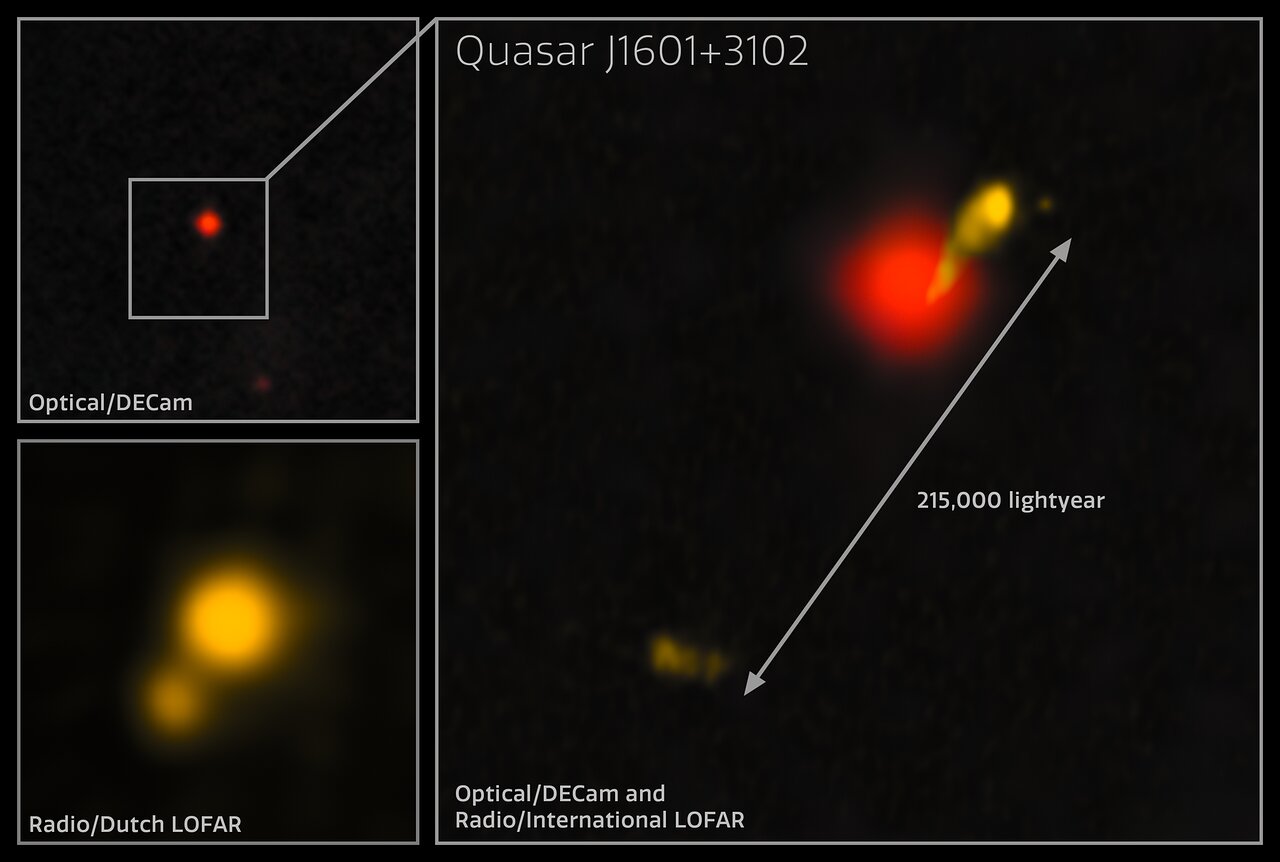Galaxies in a quasar state can release powerful jets from their active supermassive black holes. The jets can extend far into intergalactic space, even for millions of light-years. The process for many objects started a long time ago, and researchers have found these jets even in the distant universe. Astronomers have now announced the largest yet discovered, from when our cosmos was less than 10 percent of its current age.
ADVERTISEMENT GO AD FREE
The quasar in question is called J1601+3102. Its light comes to us from 1.2 billion years after the Big Bang. Quasars can sometimes weigh billions of times our Sun, but this one has a more modest mass, reaching 450 million times our Sun’s mass.
“Interestingly, the quasar powering this massive radio jet does not have an extreme black hole mass compared to other quasars,” lead author Dr Anniek Gloudemans, a postdoctoral research fellow at NOIRLab, said in a statement. “This seems to indicate that you don’t necessarily need an exceptionally massive black hole or accretion rate to generate such powerful jets in the early universe.”

Actual observation of the incredible object.
Image credit: LOFAR/DECaLS/DESI Legacy Imaging Surveys/LBNL/DOE/CTIO/NOIRLab/NSF/AURA/F. Sweijen (Durham University); image processing: M. Zamani (NSF NOIRLab)
At 215,000 light-years in length and in such an early galaxy, the jet is enormous. It is also peculiar. Jets are double-sided, escaping the quasars in opposite directions. Often, there will be small differences between the two sides. For J1601+3102, the difference in length and brightness is major, suggesting that the intergalactic environment plays a major role in shaping these jets.
“It’s only because this object is so extreme that we can observe it from Earth, even though it’s really far away,” added Gloudemans. “This object shows what we can discover by combining the power of multiple telescopes that operate at different wavelengths.”
“When we started looking at this object we were expecting the southern jet to just be an unrelated nearby source, and for most of it to be small. That made it quite surprising when the LOFAR image revealed large, detailed radio structures,” explained co-author Dr Frits Sweijen, from Durham University. “The nature of this distant source makes it difficult to detect at higher radio frequencies, demonstrating the power of LOFAR on its own and its synergies with other instruments.”
The jet was first identified using the International LOFAR (Low-Frequency Array) Telescope, a network of radio telescopes throughout Europe. Thanks to follow-up observations by the Gemini North telescope, researchers were able to discover the incredible properties of this object.
ADVERTISEMENT GO AD FREE
“We were searching for quasars with strong radio jets in the early universe, which helps us understand how and when the first jets are formed and how they impact the evolution of galaxies,” said Gloudemans.
The study is published in The Astrophysical Journal Letters.
Source Link: Spectacular Jet Over 200,000 Light-Years Across Is Largest Ever Seen In The Early Universe